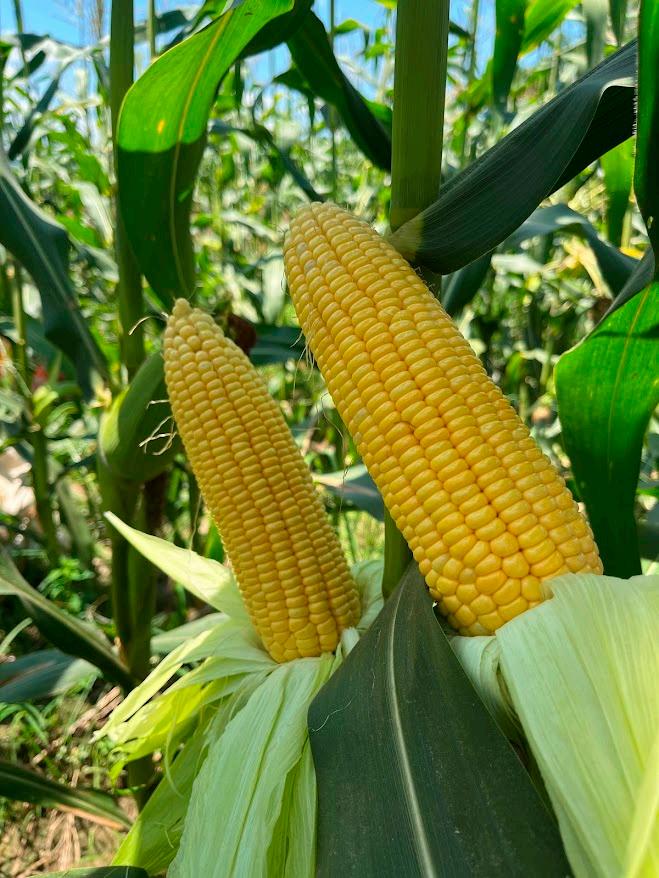

EWS-Agronomy Troubleshooting Guide

Poor Tip filling in Sweetcorn
Poor tip fill in corn ears, characterized by the absence of kernels or the presence of unfertilized kernels extending at least one inch along the ear tip, can significantly impact yield and overall crop quality.


This issue results from a several factors including insect damage, environmental stress such as drought or excessive moisture and nutrient deficiencies, all of which can contribute to poor tip filling symptoms.
Additionally, factors like planting density, hybrid selection, and timing of pest management play critical roles in the health of the developing ears.
Understanding the multifaceted causes of poor tip fill is essential for farmers seeking to optimize their corn production and mitigate losses.



Poor Tip filling in Sweetcorn (2)
Possibility causes of poor tip filling
• Tassel Characters
• Pollen: no.of pollen & pollen viability
• ASi-Anthesis silking interval: matching of pollen and silk
• High temperatures: It can affect to the development of the kernels at the tip of the ear.
Genetic Environment

• Un-uniformity at the seedling stage
• Nutrient deficiencies: Fertilizer and micronutrient
• Water stress
• Insect damage:
° Thrips in the corn silking
• Effect of pesticide application
exacerbated by asynchronous pollen shed and silking, particularly under conditions of severe drought and elevated temperatures. This mismatch can lead to a poor “nick,” further complicating successful fertilization.


The causes of poor corn ear development can be attributed to several interrelated factors that disrupt the critical pollination process.
Uneven crop development
Poor Tip filling in Sweetcorn (3)




Additional challenges arise from uneven crop development, the effects of herbicides, insect feeding, and silk clipping, all of which contribute to an inadequate supply of viable pollen. Phosphorus shortages also play a significant role, as they interfere with the pollination process.
Interestingly, favorable growing conditions may allow for a greater number of potential kernels per row than is typical, meaning that even if some ear tips are not fully filled due to these adverse factors, the overall yield potential may not be significantly compromised.
In some cases, the consistent filling of ears to the tip could indicate a need for higher plant populations to optimize yields, suggesting that the dynamics of kernel formation are complex and influenced by a variety of environmental and biological factors.
Effective management by integrating strategies is crucial for minimizing crop stress and ensuring optimal yields.
Hybrid selection:
Selecting adapted hybrids that are well-suited to the local climate and soil characteristics, along with employing seeding rates that align with the soil's yield potential.
Environment:
Timing of planting, will further contribute to robust crop performance


Poor Tip filling in Sweetcorn (4)
Field management:
Maintaining appropriate soil fertility and tailored fertilization practices that enhance nutrient availability.
Adjusting planting depth according to varying soil conditions can significantly impact root development and moisture retention, which are essential for crop health.
Planting depth adjustment according to varying soil conditions can significantly impact root development and moisture retention, which are essential for crop health.
Ensure the crop start with a uniformity of seedlings
Timely insecticide applications can reduce economically damaging insect populations.






